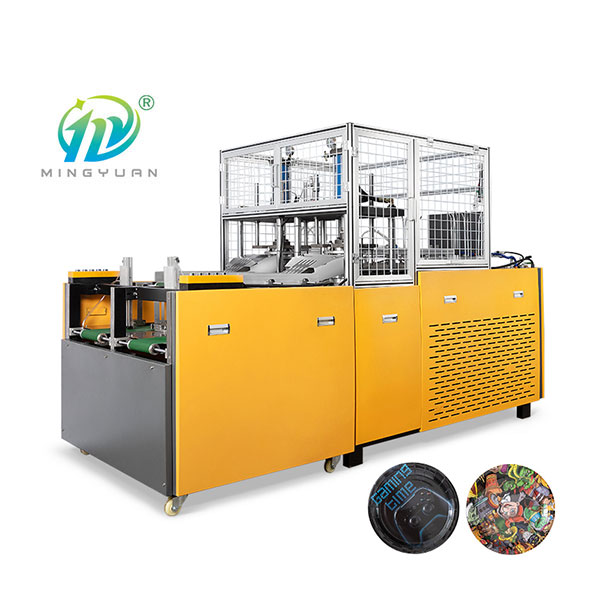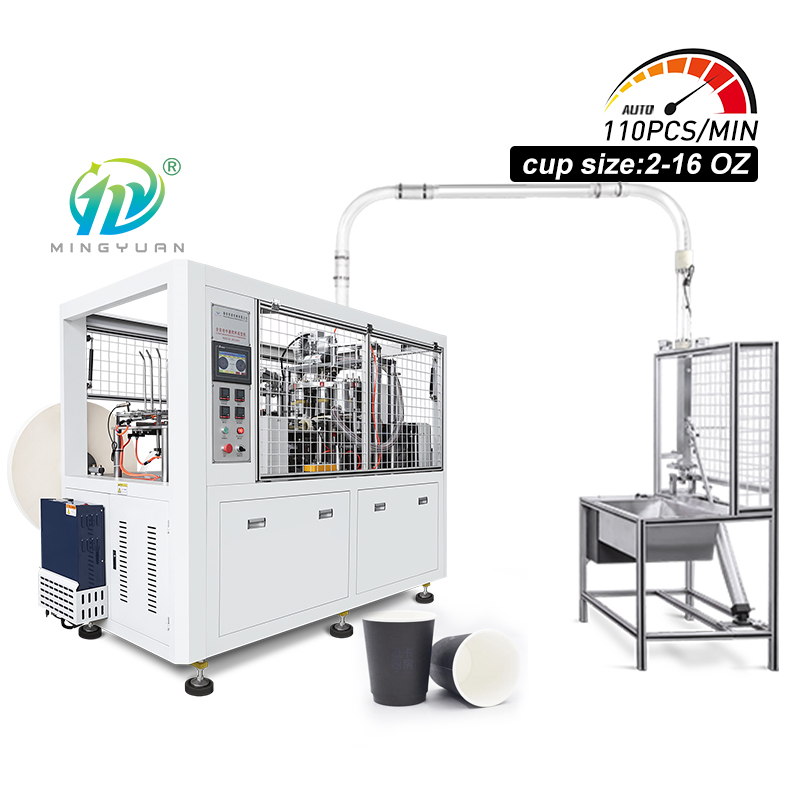Paper Plate Machine mainly processes paper into paper plates through a series of mechanical operations. Typically, the paper is cut, punched, folded and glued, etc. Routine maintenance and care of the Paper Plate Machine is essential to ensure proper operation, extend the life of the machine, and ensure product quality. Here are some aspects that need attention:
1. Cleaning
Regular cleaning of the body: use a clean soft cloth or brush to remove dust, paper dust and oil and other debris on the surface of the paper plate machine. Pay special attention to cleaning the inlet, outlet and various transmission parts to prevent the accumulation of debris affecting the operation of the equipment.
Cleaning molds: Molds are key components of paper tray forming and should be disassembled and cleaned regularly. Use special cleaners and tools to remove residual paper, glue and dirt from the mold to ensure that the surface of the mold is smooth to ensure the quality of the paper tray.
Clean the internal channels: Check and clean the paper conveying channels, stamping mechanism and other parts inside the paper tray machine to prevent the paper from clogging or damaging the equipment.
2. Lubrication
Regularly add lubricant: according to the instruction manual of the equipment, regularly add the right amount of lubricant for each transmission part, bearing and sliding parts. Select the appropriate type of lubricant to ensure that it has good lubricating properties and anti-wear properties.
Pay attention to the lubrication parts: Focus on the lubrication of the key moving parts of the Paper Plate Machine, such as motor bearings, drive shafts, gears and other parts. Ensure that the lubricant is evenly distributed to avoid insufficient or excessive lubrication.
3. Inspection
Daily pre-startup inspection: Before starting up the machine every day, carry out a comprehensive inspection of the Paper Plate Machine. Including checking whether the power connection is normal, whether the parts are loose, whether the transmission belt is intact, etc.. Make sure the equipment is in good working condition before starting the machine.
Inspection during operation: During the operation of the equipment, pay attention to observe the operation of the equipment. Listen to whether there is abnormal noise, vibration or heat phenomenon. If any abnormality is found, stop the machine immediately to check and remove the fault before continuing to run.
Regular inspection of wearing parts: Regularly inspect the wearing parts of the Paper Plate Machine, such as knives, molds, drive belts and so on. Worn or damaged parts found should be replaced in time to ensure the normal operation of the equipment and product quality.
4. Operation standardization
Operate the equipment correctly: strictly follow the operating instructions of Paper Plate Machine to avoid illegal operation and misoperation. Operators should be professionally trained and familiar with the performance and operation of the equipment.
Control the production environment: Keep the production environment clean, dry and well ventilated. Avoid using Paper Plate Machine in humid, high temperature or corrosive gas environment, so as not to affect the performance and life of the equipment.
Reasonable arrangement of production tasks: avoid prolonged continuous operation of the equipment, should be based on the load capacity of the equipment to reasonably arrange the production tasks, to give the equipment appropriate rest time, in order to reduce the wear and tear of the equipment and the probability of failure.
5. Safety
Safety guards: Ensure that the safety guards of Paper Plate Machine are intact, such as guards and emergency stop buttons. Operators should use the safety guards correctly when operating the equipment to avoid safety accidents.
Electrical safety: Regularly check the electrical system of the equipment to ensure that the wires are firmly connected, not broken and well grounded. Avoid safety accidents caused by electrical failure.
Operator Safety: Operators should wear good personal protective equipment, such as gloves, goggles, etc.. During the operation of the equipment, do not put your hands or other body parts inside the equipment to avoid danger.








